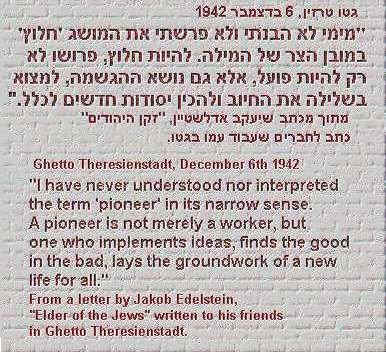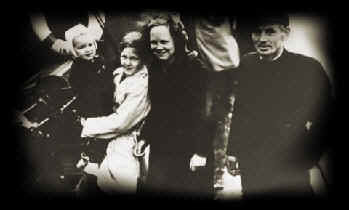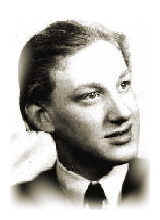|
|
|
| The Danish Jews were one of the most common
Jews at Terezin ,(Theresienstadt) a Ghetto in Czechoslovakia. The Danish
Jews were friends with their fellow non-Jewish Danes. You will soon
be learning about the ways the Danish Red Cross helped the Jews out.
How the people helped the Jews across the North Sea to to Sweden,
and how a brave man took risks to save over 8,000 Jews. |
|
| In 1943 Terezin had about 450 Danish Jews who
were unable to escape. In November 1943 the Danish Red Cross got
permission to send clothing parcels, but not medicine. The Red Cross
wanted to send food to them but the Germans wouldn't let them. They
would let them send personal parcels to them, so the Red Cross sent food
to the individuals. |
|
| In the winter of 1943, the Danish
Red Cross requested that they wanted to investigate the ghetto.
Germany agreed to it, but only on one condition, they wait until next
summer. During that time they made the Jews clean up the
ghetto. They started planting flowers, painting, and scraping off
the old paint. Now this grody ghetto into a cheerful Jewish town.
The Germans didn't want the town to overcrowd, so they sent the incoming
Jews strait to death camps. |
|
|
|
| When the committee arrived in June
of 1943, the Germans provided the Jews with scripts. A group of Jews
greeted the Red Cross. the committee toured the town passing parks,
playgrounds and other homey objects. The committee left with a
pleasing report on the town. The Danish Jews however, were not
pleased with the report. They were saddened that the Red Cross didn't find
the real truth. They were happy about the outcome of the Germans fearing
that the Red Cross might want to come back, so they promised the Danish
Jews that were there they could stay instead of going to death camps. They
also improved the living conditions and the food rations to the
Jews. Upon the liberation in 1945, only 17,320 prisoners of an
estimated 140,000 remained in camp. All others were sent to death
camps. Some died from diseases. 400 of the 450 Danish Jews
sent to the camp in 1943 lived. |
 |
|
|
Rescue In Denmark |
| In spite of
all the risks there were in helping the Danish Jews. A small number
of individuals refused to just sit back and watch. These people had
the courage to take risks, even if it ment sacrificing their lives to help
the Danish Jews, by giving food , providing hiding places, underground
escape routes, clothing, money, sometimes even weapons. Denmark was the
only occupied country that actively resisted the Nazi's regime's attempts
to try to deport the Danish Jews. |
|
| On Sept. 28, 1943 George Ferdinand Duckwitz
informed the Danish resistance group about Germany's plan to deport the
Jews. The Danes acted quickly, they organized a worldwide effort to
smuggle the Jews by sea to neutral Sweden. Jews began to leave Copenhagen,
where most of the 8,000 Jews lived. The Jews found hiding places with help
of their fellow Danes. The Plan was not completely successful. |
 |
|
|
FEAR
Today the ghetto knows a different fear,
Close in its grip, Death wields an icy
scythe.
An evil sickness spreads a terror in its
wake,
The victims of its shadow weep and writhe.
Today
a fatherís heartbeat tells his fright
And mothers bend their heads into their
hands.
Now children choke and die with typhus here,
A bitter tax is taken from their bands.
My
heart still beats inside my breast
While friends depart for other worlds.
Perhaps itís better-who can say?
Than watching this, to die today?
No,
no, my God, we want to live!
Not watch our numbers melt away.
We want to have a better world,
We want to work-we must not die!
Eva Pickova
|
|
|
A Rescuers Story |
| As a member of the Danish Resistance in his
youth, Munch-Nielsen helped save nearly 7,000 Jews from certain deaths at
the hands of the Nazis. Munch-Nielsen "Did what he had to
do". He couldn't do anything else. When Germany interned the
Danish army and navyin 1943, the Danish Resistance quickly acted. Young
men and women like Nielsen published underground newsletters to tell the
real truth. |
|
| And so the Resistance mobilized it's rescue of
the Danish Jews, hiding them in churches and homes until they could ferry
them across the North Sea straits to Sweden. At night 12 at a time,
the Jews would sail 21-foot long boats to Sweden. The nearly
30-minute trip could take hours as the resistance had to evade German
ships at sea. |
|
| Of the country's 7,000 Jews, only 60, were not
saved. Munch-Nielsen didn't know any names of the people he
saved. Munch-Nielsen did not speak publicly about his experience
until 10 years ago, when a friend asked him to tell his story with a group
of Jewish travelers in Denmark. At 59 his speaking career
began. Following the war many Danish Jews returned to Denmark. He
doesn't think about who is a Jew or Non-Jew. But now that the Jews
have returned, he added, "Denmark is complete again". |
 |
|
|
Robert
Cooper
7th
Social Studies
Rossville
Jr. High
Holocaust
Project
2004 |
Bibliography |
|
|
|


